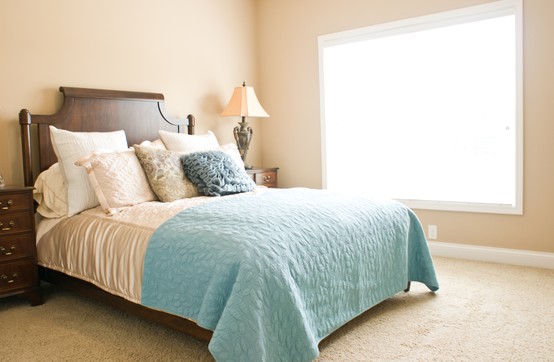Thursday, November 8, 2012
One of the top trends of 2012 in new home construction was the addition of multigenerational living spaces, according to the National Association of Home Builders. When building a home meant to house more than one generation, there needs to be a different design than for a traditional single-family home. Whether it's because more are children returning home after college or more parents are moving in with the family, multigenerational homes are increasing in popularity.

We at Ball Homes keep ahead of the trending designs and have been offering this type of living in many of our most popular floor plans. Many of our floor plans offer a wide variety of options to meet the needs of today’s families. From optional first-floor guest suites to finished basements with full baths, our floor plans are designed around what you, the buyers, want and need from your home.
Wednesday, November 7, 2012
Every winter season, the pipes in your home are at risk of damage from freezing conditions. Low temperatures can cause your water pipes to freeze, and in some cases burst. Protect your home by preventing broken pipes now before the cold weather sets in.
· Make sure you disconnect any garden hoses and tighten the outside spigot to be sure the water is turned off for the winter. If you leave a garden hose attached, a small amount of water can stay lodged in the pipe by the spigot and will quickly freeze. This ice can damage your faucet and pipe, making for a costly repair down the road.
· If you don’t remove the leaves and debris from your gutters now, they’ll become clogged with massive chunks of frozen debris. Clogged gutters can create ice dams, an overflow of ice that forms along the ridges of your roof and can cause warping, roof damage and mold growth.
· Make sure pipes along an exterior wall have access to the heat in the house. For example, if the water pipe for your kitchen sink is along an exterior wall of your home, keep the cabinet door open so heat from the house can circulate and warm the pipes.
· Identify the location of the main water valve and the valve on your water heater. Know how to turn it off, in case of emergency.
· When temperatures drop below 20 degrees overnight, let a slow drip or trickle of water flow out of the faucet to keep the water moving. When both hot and cold lines serve a spigot, make sure each one contributes to the drip.
· If you’re going on vacation or leaving the home for an extended period of time, don’t turn the heat completely off. Keep it from 55-60 degrees, and open all of the kitchen and bathroom cabinets, crawlspace doors, and make sure the basement also has access to the home’s heat.
Friday, November 2, 2012

After you’ve moved in to your new Ball home, make sure your kitchen remains organized and clutter-free with these quick tips!
-
Organize your kitchen cabinets by placing items you’ll use the most on the lower shelves and the things you’ll use least on the higher shelves.
-
Store small appliances like a coffee grinder, handheld electric mixer, and toaster, inside a cabinet on a large lazy Susan. You’ll be able to keep the large, bulky items hidden, but still within reach when you need them.
-
Use your new glass-front cabinets to showcase your good china, antique bowls, or even canisters filled with pasta.
-
Create a cooking zone around the stove, storing pots and pans as close to the range as possible. Stow essential tools together within easy reach of your cooking zone for efficient food prep.
-
Utilize your interior cabinet doors. Line a door with cut-to-fit sheets of cork to create a message center, or attach a magnetic board to the inside of a door.
-
Set aside one drawer for junk. Most organization experts agree that you can and should have a junk drawer for all the little odds-and-ends things around the house. Use drawer dividers to keep it organized and make sure you go through it at least once every few months to throw away the things you really don’t use.
Do you have any other kitchen organization tips? Let us know on our Facebook page!
-
Organize your pantry shelves as you would a library, with food items grouped by category. Save space by storing bulky food items in coordinating containers.
-
Line the base of your cabinets with a waterproof mat. You’ll be able to easily wipe up spills, leaks, or crumbs while protecting your cabinets.
Do you have any other kitchen organization tips? Share them with us on our Facebook page!